Reviews
Frederick Wiseman
USA, 1989
Credits
Review by Adam Balz
Posted on 19 June 2008
Source Zipporah Films VHS
Categories Frederick Wiseman
What happens in a changing field of medicine, where we have to ask ourselves whether medicine is to remain a humanitarian and respected profession or a new but depersonalized science in the service of prolonging life rather than diminishing human suffering? Where the medical students have a choice of dozens of lectures on RNA and DNA but less experience in the simple doctor-patient relationship that used to be the alphabet for every successful family physician? What happens in a society that puts more emphasis on IQ and class-standing than on simple matters of tact, sensitivity, perceptiveness, and good taste in the management of the suffering?
—Elisabeth Kubler-Ross, On Death and Dying
During a 1969 discussion with administrators over High School, Frederick Wiseman responded to a question concerning his apparent lack of objectivity by saying, “Every documentary films is subjective. I don’t know how to make an objective one.” Barely three years later, during an interview with G. Roy Levin for Documentary Explorations, he responded to a similar question with “I think the objective-subjective stuff is a lot of bullshit. I don’t see how a film can be anything but subjective.” In fact, in reading through the mountains of mainstream and academic material available on Wiseman and his work, as well as watching the films themselves, one important word seems to return with eerie consistency: Manipulation.
“Manipulative” is often used to describe documentaries in general; directors and editors, no matter how loud their cries of fairness and impartiality, are never far from their own deep-seated biases, which are often manifested in the movements and motions of their cameras, in the look and style of their finished products. But in an age of filmmakers like Michael Moore, who sport their biases as badges of honor, the nonfiction film has become an increasingly visible focus of partisanship. A frequent target of these claims, Frederick Wiseman has nonetheless managed to avoid discussing the subject by repeating variations on the same tired mantra—that classifications such as “objective” and “subjective” are meaningless, even as he causally, almost playfully, uses “manipulation” in a response about his editing process:
LEVIN: But certainly in the three films of yours that I’ve seen, you manipulate the material in the editing—not to mention that one always selects what one actually shoots.
WISEMAN: Of course the editing manipulates, but the distinction I’m making is this: Say you’re at a place for four hundred hours and you shoot forty hours and you use ninety minutes. All that is selection, all that is choice. Sure.
The irony of the “manipulative” label being thrown at Wiseman is interesting when you consider the word’s many manifestations in his 1989 film Near Death. Most notable is the word’s usage by a nurse in a meeting with other ICU staff at Boston’s Beth Israel Hospital:
[A patient] came in on a Sunday and they were brain-dead on a Sunday, and we manipulated it by adding stuff. Pressers, she was on Neosenefrin to keep her blood-pressure up. Everything was manipulated to keep her going, so that the family could get the consults in and could deal with it. Now, do we make it any easier for their family? Not as far as I’m concerned, because when the end finally came for them it was no easier on the Wednesday than it was if they had dealt with it right then and there, you know, go right in and say, “We have all the criteria.” We do a CAT-scan, it shows a huge bleed; we do a flow-study to the brain that shows absolutely no flow to the brain; we do all the studies that indicate whether the person is brain-dead. If it’s true on Sunday, then—I mean, we didn’t make it any easier.
Manipulation, by her own admission, is their job: To manipulate a dying person with drugs and machines, allowing them to stay “alive” until their family can accept the inevitable. But manipulation is often utilized with subtlety by the staff, including Doctor Curlin, whose motives seem to be more personal than professional. Visibly the oldest member of the ICU staff, he also acts at times like a self-erected roadblock between life and death. The second part of Near Death focuses on a patient named Bernice Factor, who lies intubated in a hospital bed. Her husband, a former doctor, is often by her side but bristles at any suggestion of removing the tube. Bernice, on the other hand, not only wants the tube removed - it’s an annoyance, we’re often reminded by the hospital staff - but doesn’t want the recommended tracheostomy, which would involve inserting a permanent and accommodating tube in the base of her throat. Her decision to abandon all medical assistance means certain death, though the word is barely spoken throughout consultations with Bernice, not to mention the film’s entire six-hour run-time.
Bernice’s confidence, however, disappears midway through Part II, when a half-dozen doctors and nurses crowd around her bed, trying to sway her towards a definite avenue of treatment. According to the staff, she seemed adamant about removal in a conversation with Doctor Weiss the day before but wasn’t as definite after a meeting with Curlin. Standing at the foot of her bed, Weiss says, “And when Ann-Louise and I … talked to you yesterday, I got the impression that what you wanted to do was to have the tube out and not have it put back in, but I really—it’s important for me to know what you want, because Dr. Curlin is going to come back here today, and he’s going to want to know, too.”
She doesn’t commit to any course of treatment, and once Bernice dismisses the small group with a slight wave of her hand Curlin moves in, taking a seat at her bedside and leaning close:
Other people go off duty, but your old friend is always around, so you and I can peacefully discuss this at some length. My understanding yesterday is that you weren’t quite sure what you wanted to do about this business, is that right? [Bernice nods] Okay, you take all the time you need. And I must say that, whatever we do, we can undo it if we have to, too—these are not decisions that are cast in cement and cannot be changed. But on a nice day, when the sun is shining, it seems pretty good to be around. And Harry’s around. I spoke with him yesterday afternoon. He wanted to be sure that I understood exactly what his feelings were, and what he thought yours were, too. So, you just be confident that your interests come first with everybody, okay?
Harry, we learned before, has been pushing for his wife to live, and even Bernice admits, through nods and waves of her hand in conversation with Weiss and the nurses, that her husband wouldn’t want the tube removed, not even for a tracheostomy. Doctor Curlin, we learn later, knows this, and he offers his own observations as almost a non-sequiturs in a discussion with the other staff, saying,
Dr. Factor came up to my office yesterday. Hard to understand what he was trying to say to me—he just came and just sort of wanted to hold my hand for a minute, as though to get some feeling, ‘Gee, somebody really knows what’s going on, and knows that I’m suffering.’ And that’s literally all I did. So I think that he, rather than lose her, would certainly go for doing a procedure.
Not only does Curlin try and persuade Bernice to have the operation - assuring her than everything is reversible, as though saying it wouldn’t hurt to try, and then plying her with a comment about the “nice day” - but he also uses his emotional and professional connections with Harry Factor as a means of swaying his fellow caregivers. And he is successful. As the film closes with an unconventional use of titles, we learn that Bernice was released from Beth Israel after filming wrapped and returned home.
The simple fact that a movie about the Medical Intensive Care Unit at Beth Israel in Boston, where those who are dying1 go for “life-sustaining treatments,” could be made at all tells us something immediate about ourselves: That death, in our society, has become an institution. Consider the roles of funeral parlors, mausoleums, cemeteries, and crematoriums; coroners, undertakers, urn-makers, embalmers; the men and women responsible for selling death in the form of caskets and headstones and side-by-side burial plots; architects who design funeral homes, automobile companies that make hearses, journalists who write obituaries; preachers, doctors, nurses, and other medical professionals. Even the ICU at Beth Israel, which is often cited as one of the nation’s top hospitals, is only a microcosmic player in the ever-growing institution of mortality.
But, as many critics have noted, the doctors and nurses of Near Death are almost never seen practicing medicine. More often than not, when they are at their patients’ sides, they’re either offering comfort - another word that appears frequently in this film - or trying to clarify their wishes for treatment. In the few instances of a filmed medical emergency - two patients who are flat-lining - the moment is calm, almost surreal, which must be a normal occurrence to those familiar with intensive care but seems almost mystifying to those of us on the outside. Rather than the frenzied attempts at resuscitation, with which we’ve become familiar from television and the movies, the most prominent figure is a nurse with defibrillation paddles in both hands, using the edge of one to casually smooth out the gel on the other while the patient passes away behind her.
Near Death is Frederick Wiseman’s longest work to date, though it’s by no means his most profound. The subject of death and how we manage it - as patients, as professionals, as family - barely compares to other subjects Wiseman has studied, such as how we cope with unwarranted assaults on our own bodies (Domestic Violence) or the effects of physical handicaps on daily routines (Deaf, Blind). Death is eventual for all of us, and being so ingrained in our upbringings it’s hardly as overwhelming— or, you could argue, deserving of so much time. In trying to recall all six hours of Near Death, one scene more than any other sticks out: A montage of silent shots that lasts barely a minute - less than one-tenth of a percent of the whole film. The scene begins with a nurse loading papers into a cylinder, which she then dispatches in a pneumatic tube. The cylinder rises up, disappearing from sight, and the camera cuts to a janitor emerging from a room. After another quick cut, this time to an old woman in a hospital bed, we return to the janitor as he enters another room. The scene ends, and the mission of the ICU, at least in Wiseman’s eyes, is made clear to us. The men and women on staff have only one goal, and that is to send each of their patients “up” with comfort and ease. And afterwards the rooms will be cleaned, opening a bed for the next person who needs one.
^1^ Buried among the closing credits, after mentions of editorial mixers and title designs, is the following statement: “This film was made about terminally ill patents. Most patients hospitalized in intensive care units recover.” ↩
More Frederick Wiseman
-
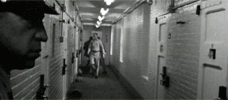
Titicut Follies
1967 -
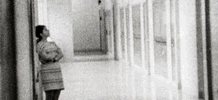
High School
1968 -

Law & Order
1969 -

Basic Training
1971 -

Juvenile Court
1972 -
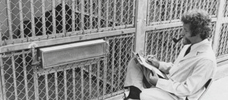
Primate
1974 -
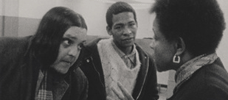
Welfare
1975 -
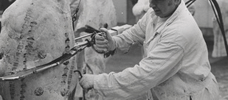
Meat
1976 -
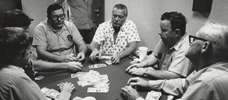
Sinai Field Mission
1978 -
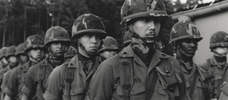
Manoeuvre
1979 -

Model
1980 -

The Store
1983 -

Blind
USA -
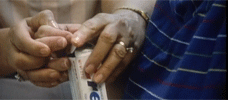
Adjustment & Work
1986 -

Missile
1987 -

Central Park
1989 -
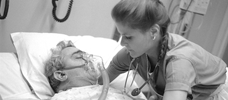
Near Death
1989 -

Aspen
1991 -

Zoo
1993 -

High School II
1994 -

Ballet
1995 -

La Comédie-Française
1996 -

Public Housing
1997 -

Belfast, Maine
1999 -

Domestic Violence / Domestic Violence 2
2001 / 2002 -

The Last Letter
2002 -

State Legislature
2006
We don’t do comments anymore, but you may contact us here or find us on Twitter or Facebook.



